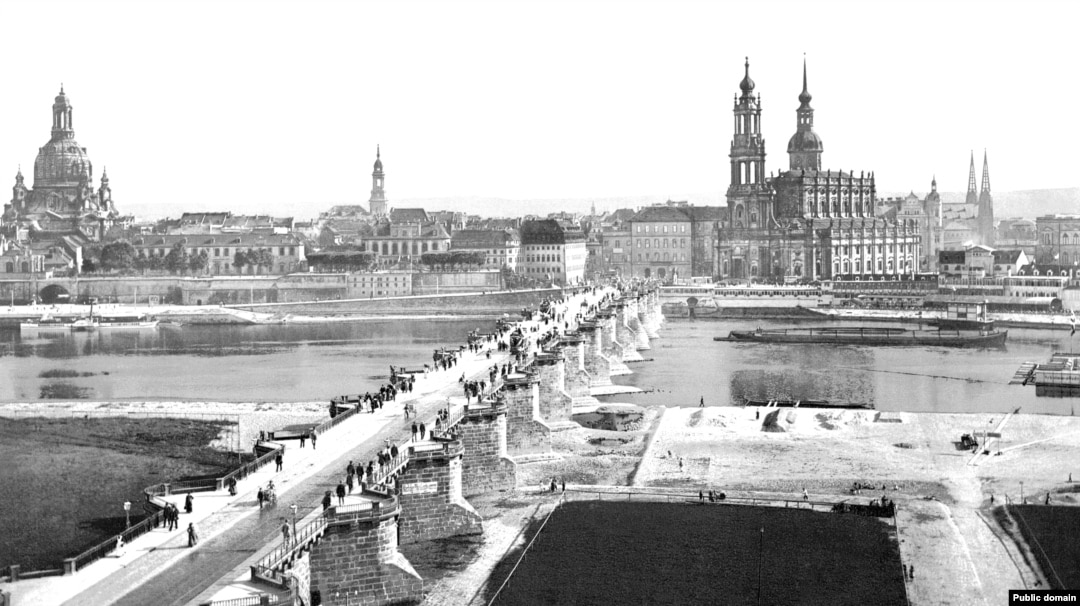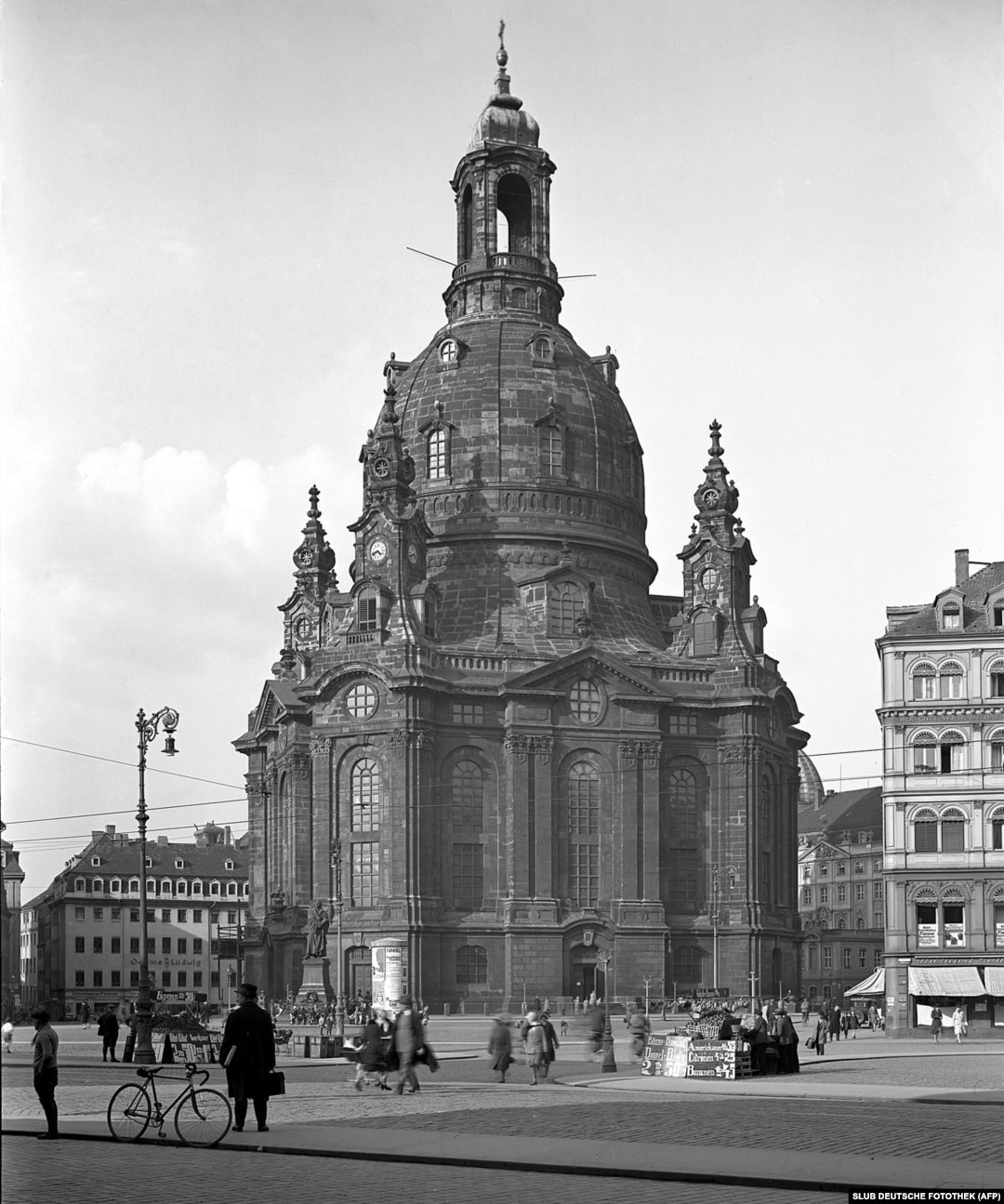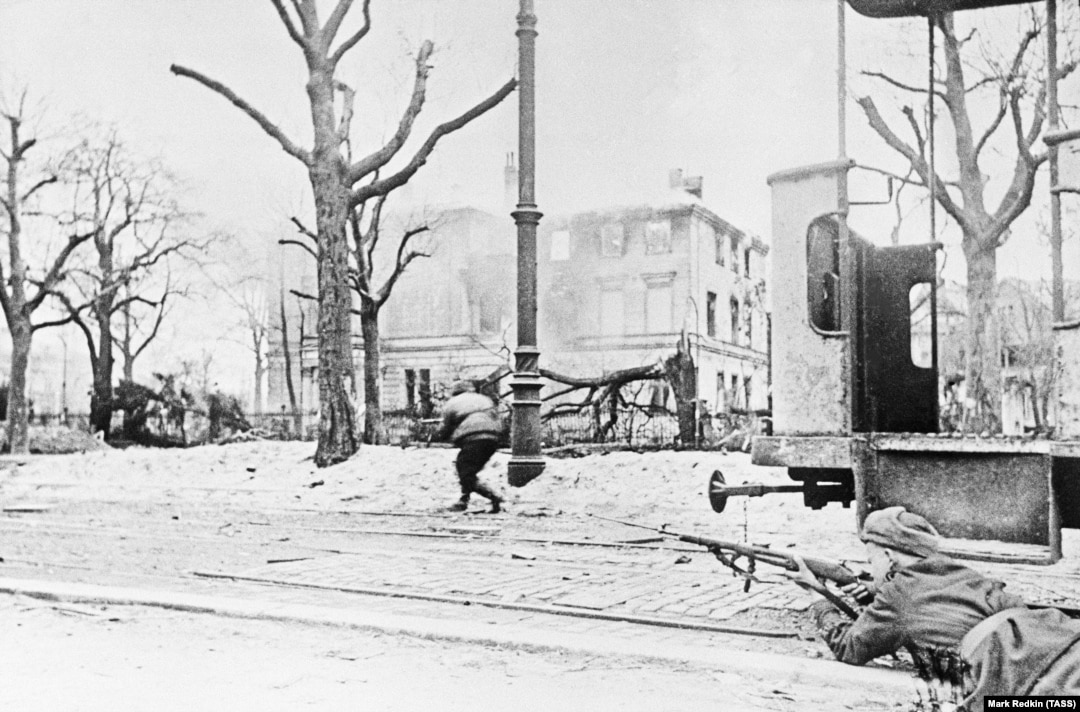'The Most Fearful Nightmare': 75 Years After The Bombing Of Dresden

Dresden's skyline in the late 1800s, when the city was a thriving cultural center.

Dresden's Church Of Our Lady in 1930 -- shortly before the Nazis came to power in Germany and later plunged Europe into war.

Soviet soldiers advancing through western Poland in January 1945. One month later, Allied troops were massed on Nazi Germany's western border and the Red Army was storming through the eastern part of Germany.
British Lancaster bombers flying over Europe during World War II. By 1945, Britain's Royal Air Force had begun to target German cities with massive bombing raids intended to "break the morale of the population which inhabits [them]." Earlier in the war, Nazi Germany had killed more than 40,000 Britons in its own bombing campaign on civilian centers.
A British Lancaster bomber being fitted with sticks of fire-starting incendiaries and one "blockbuster" bomb. At around 10 p.m. on February 13, 1945, 244 Lancasters rained this combination of incendiary and high explosives onto Dresden.
The smoldering outskirts of Dresden during the attack. Three hours after the first air raid, as Dresden's firefighters were battling the blazes and surviving civilians were clambering out of their shelters, a second wave of British bombers dumped another 1,800 tons of bombs from the night sky onto the flaming city.
Yet more bombing raids followed, including by 311 U.S. Boeing B-17 planes (pictured) the following day.
Dresden still smoldering from the attacks on February 16.
The skeletal remains of the city center after the bombing. A 9-year-old German boy described being in the street during the second raid and seeing "Fire, only fire everywhere we looked.... It was beyond belief, worse than the most fearful nightmare."
A pile of bodies before they were publicly cremated. Some 25,000 people were killed during the bomb attacks on Dresden, many incinerated in a firestorm so powerful people were literally sucked down streets and into the inferno.
Bodies inside a Dresden basement where they had sought shelter from the bombs. With the oxygen sucked out of the air by the firestorm above, many people suffocated in their shelters.
The remains of the Church Of Our Lady and a broken statue of Protestant reformer Martin Luther after the bombing. The church and statue are pictured before the bombing earlier in this gallery.
U.S. soldier Kurt Vonnegut, who was being held as a prisoner of war just north of Dresden's city center when the bombs fell, wrote the famous novel Slaughterhouse-5 based on the firebombing. In the book he describes seeing Dresden engulfed in one towering flame that "ate everything organic, everything that would burn."
Stumps of buildings stand in Dresden's city center. A British prisoner of war who was in the city during the firebombing recalled that while charred adult bodies could be seen throughout the rubble, there was little left of the children because "their bones were too tender and they just melted."
As well as "demoralizing" the population, one aim of the Dresden bombings was to clog the roads of eastern Germany with refugees to prevent Nazi reinforcements redeploying to meet the Soviet advance in the east.
An American newscast from the time declared that the bombing "helps [Soviet] forces, 70 miles [115 kilometers] away."
A British Royal Air Force memo to pilots also noted the bombing would incidentally "show the Russians when they arrive what Bomber Command can do."
British Prime Minister Winston Churchill appeared to have misgivings after the results of the bombing were relayed to London. In March 1945, Churchill wrote, "It seems to me that the moment has come when the question of bombing of German cities simply for the sake of increasing the terror, though under other pretexts, should be reviewed."
A store in the ruins in late 1945 selling toiletries and beauty products, as well as fertilizer and house paint.
People clearing away rubble in 1952.
Many of Dresden's architectural treasures were rebuilt using historical photographs, as well as chunks of carved stone rescued from the rubble for reference.
The Dresden waterfront photographed in 2014 after reconstruction projects were completed. The rebuild was helped by a British charity that raised £600,000 ($779,000) from some 2,000 people and 100 companies in 1993.
The skyline of Dresden photographed in 2019, with the rebuilt Church of Our Lady (right). Seventy-five years after the city's destruction, the bombing remains a highly contentious page in the story of the Allied effort in World War II. In 2005, a British historian said Dresden "was a symbol of baroque humanism and all that was best in Germany. It also contained all of the worst from Germany during the Nazi period. In that sense it is an absolutely exemplary tragedy for the horrors of 20th-century warfare."

